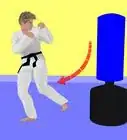This article was co-authored by Asher Smiley. Asher Smiley is the Owner and Lead Instructor at Krav Maga Revolution in Petaluma, California. Asher has earned a Tier 1 Instructor Certification in the American Krav Maga system. In 2017, he trained with the International Kapap Federation Combat Krav Maga International, completing their 7 day tactical seminar and the 8 day CKMI instructor course.
There are 7 references cited in this article, which can be found at the bottom of the page.
This article has been viewed 144,331 times.
When executed correctly, a hook is one of the most powerful punches you can throw. A quick hook often catches an opponent off-guard, leaving them open for another punch. To throw a hook, assess your situation and get up close to your opponent. Arc your fist forward by turning your body to strike with speed and accuracy. Knock out the competition by practicing your basic hook and even incorporating some alternative hooks into your fighting style.
Steps
Settling into a Boxing Stance
-
1Stand in a proper boxing stance with your dominant foot in back. To get into a boxing stance, stand with your legs a shoulder-width apart. Then, bring your dominant foot about half a step back. Turn your foot to the side so you can use it to pivot forward as you punch. Keep your other foot pointed forward so you are able to see ahead of you.
- In boxing, proper form is very important for throwing strong punches while staying mobile. When you’re in the correct stance, the toes of your back foot align with the heel of your front foot.
- For example, if you’re right-handed, step back with your right foot. Turn your foot a little more than halfway to your right. Plant your left foot ahead of you.
-
2Stand up straight to see what is ahead of you. Stand tall with your head up, keeping it above your hands so you have a full view of the action. Focus on what your target is doing and where you can find an opening for the punch. Stay alert and get a full range of motion from your body by maintaining good posture as much as possible.[1]
- Your posture is your stability. You might feel tempted to bend forward and stick your head out if you’re unused to throwing hooks. When you do that, you can’t see what’s ahead of you and give your opponent more of a target.
Advertisement -
3Bend your knees slightly to balance your weight. Bending your knees also gives you the mobility needed to launch yourself at your opponent like a pouncing tiger. When you bend your knees, make sure your weight is distributed evenly between your front and back foot. Putting too much weight in the front or the back can leave you exposed when you throw the hook.[2]
- If you lean on your front foot, throwing a hook pulls your body forward. If you lean back, your punch loses power.
- You only need the slightest of bends in your knees, enough to prevent them from locking. Bending too much brings your head down closer to your opponent’s hands. If your legs feel stiff, bend your knees a little more.
-
4Maintain a high guard with your hands to protect your face. Keep your hands balled into closed fists in front of your face. Position them at about the same level as your nose and mouth, right below your eyes. Also, keep your leading hand slightly ahead of your other hand. This will give you an opportunity to block with your non-dominant hand and hit back with your dominant hand.[3]
- This stance is very important for protecting yourself. Get your hands into position before and after you punch, or else your opponent may try throwing a hook of their own.
EXPERT TIPAsher Smiley is the Owner and Lead Instructor at Krav Maga Revolution in Petaluma, California. Asher has earned a Tier 1 Instructor Certification in the American Krav Maga system. In 2017, he trained with the International Kapap Federation Combat Krav Maga International, completing their 7 day tactical seminar and the 8 day CKMI instructor course.Self Defense Trainer
 Asher Smiley
Asher Smiley
Self Defense TrainerOur Expert Agrees: When you're throwing a hook, try to get your elbow and fist up to shoulder height, with your palm facing towards you. That helps maximize the contact with your two big knuckles, so you'll be less likely to break your hand or wrist.
-
5Walk up close to your opponent before attempting a hook. Hooks are short-range punches. If you’re too far away, you won’t be able to generate enough momentum to power your punch. Close the distance between you and your opponent first so they have less of an opportunity to block or dodge your hook.[4]
- If you try to throw a hook from too far away, you lean forward when you punch. It also gives your opponent a big opportunity to see the hook coming, block it, and hit back.
- Practice your punches and footwork through sparring. Frequent practice leads to a better understanding of where you need to stand before you’re ready to throw a hook.
-
6Aim for an unguarded spot such as the chin or temple. Check your opponent’s stance to find out what parts of their body aren’t well-guarded. You generally aim for the temple when throwing a hook, but the punch also works well on many other areas. Look for openings on your opponent’s body, for instance, or on their chin.[5]
- If you’re boxing, focus on the chin and the body. These spots are the easiest ones to aim for, depending on where your opponent places their own fists. Hooks to these areas are very effective.
Completing the Punch
-
1Start the punch by pulling back your leading arm. Most, but not all, hooks are done with the front hand. When you’re in a boxing stance, this will be your non-dominant hand. If your left foot is forward, draw back your left arm for the punch, for example. Move your arm back, keeping it parallel to the ground with your elbow bent.[6]
- If you want to hit an opponent with a hook, you have to be quick. Snap your arm back and go for it. If you wind back to prepare a powerful punch, your opponent has a chance to see it and dodge.
- You could throw a hook with your dominant hand using the same technique. However, since hooks have such a short range, be cautious. Throw the hook as a part of a combo or get closer to your opponent first to ensure you have enough range.
-
2Twist your body toward your non-dominant hand as you wind back. A strong hook is a full-body punch, so get your lower body into it. Move your body at the same speed as your hand, starting with your hips. Bring your shoulder on your dominant side forward to rotate your body toward your punching hand. Continue rotating your body in sync with your non-dominant arm throughout the punch.[7]
- For example, if you are throwing a hook with your left hand, rotate to the left, bringing your right hip forward. Doing this adds more force to your punch, but you have to be quick to prevent your opponent from recognizing the hook.
EXPERT TIPRotate with your hips and feet, rather than your shoulders. Otherwise, you'll put a lot of pressure on your shoulder joint.
Asher Smiley is the Owner and Lead Instructor at Krav Maga Revolution in Petaluma, California. Asher has earned a Tier 1 Instructor Certification in the American Krav Maga system. In 2017, he trained with the International Kapap Federation Combat Krav Maga International, completing their 7 day tactical seminar and the 8 day CKMI instructor course.
Asher Smiley
Self Defense Trainer Asher Smiley
Asher Smiley
Self Defense Trainer -
3Move your non-dominant fist forward in a tight arc. Make your hook punch effective by pulling your arm back and quickly launching it forward. Use your shoulder to extend your arm, curving your hand toward your opponent. Try to keep your arm close to your body to make the punch as quick and explosive as possible. Although the arc your fist makes gives the punch its name, hooks are easy to read if you take a wide arc.[8]
- Maintain your arm position throughout the punch to avoid hurting yourself. Keep your elbow up and your wrist straight with your arm parallel to the floor.
- Remember that a hook is a whole-body punch. You will need to incorporate your lower body as well to give it plenty of speed and power. The arm motion is only part of the punch.
-
4Tuck your dominant hand down close to your body. Your opposite hand could get in the way of your movement, so bring it down slightly. Keep your arm bent like you normally hold it in the regular boxing stance. Bring your arm down until your fist is right underneath your chin. That way, you have plenty of room for your hook.
- Keep your hand close to your face in case you need to use it to defend. Tucking in your arm blocks part of your body so your opponent can’t suddenly hit you there.
- If you throw a hook with your dominant hand, bring your non-dominant hand down close to your body instead.
-
5Pivot your feet as you complete the hook. Carry your momentum forward to deliver the strongest of hooks. As you start the punch, lift the heel of your back foot. Then, rotate your feet with the rest of your body like you’re squishing a bug. Finish the punch by dropping your back heel when your fist connects with your opponent.[9]
- Rotate while standing on the ball of your back foot, the part right below your toes. When you begin the rotation, drop the heel of your front foot to maintain your balance.
- Keep your weight balanced as much as possible between your feet. Many people lean forward when throwing a hook, but this is dangerous. You lose power and leave yourself exposed when you’re not well-balanced.
-
6Stop moving your fist when it connects with your opponent. Follow through with your punch by using both your upper and lower body to drive your non-dominant fist into the target. Tighten your fist up as you land the punch, but don’t overextend yourself. Your fist moves in an arc during a hook, so if you overswing, the force of your movement could pull you forward. Stand up straight and stay balanced so you are able to protect yourself from a counterattack.[10]
- Stopping your fist too soon is also a problem. It weakens your punch, so don’t halt your momentum until you reach your target.
-
7Stand back in your regular boxing stance to protect yourself. If you’re not planning on throwing other punches right away, quickly shift back into your starting position. Twist your body back around so you’re facing forward. Keep your legs a shoulder-width apart in a balanced stance that gives you the opportunity to defend or attack again. Remember to keep your hands up by your face for protection.[11]
- Hook punches often come after other punches, such as jabs. You could also use a good hook to launch into a combo, such as by throwing a hook with your dominant hand or an uppercut.
Attempting Alternate Hooks
-
1Use a shovel hook to reach underneath an opponent's defense. A shovel hook is a cross between a regular hook and an uppercut. To throw it, pull your arm down at a 45-degree angle instead of holding it parallel to the floor. Rotate your body like you do with a normal hook, but aim for your opponent’s jaw. This punch comes at a different angle than the regular hook since you aren’t holding your arm parallel to the floor.[12]
- When your opponent stays on defense so you can’t throw a normal hook, try a shovel hook. The unique angle often surprises opponents.
-
2Throw a back step hook if your opponent charges toward you. Back step hooks take some quick footwork to throw effectively. When your opponent moves, step back and put your weight onto your front foot. Then, begin throwing your hook, using your front leg to generate power and stability. This hook differs from a standard hook in that you adjust your balance, allowing you to reach forward with more power.
- Think of a back step hook as a way to stop something coming straight toward you. You won’t have an opportunity to get out of the way, so commit to the punch. Make sure you’re set in your stance and prepared to defend with your other hand.
-
3Attempt a check hook to step around a charging opponent. A check hook is very similar to a back step hook, but it requires even more footwork. As your opponent charges, throw your hook. Then, as you pivot on your feet, swing your back foot around until you face your opponent again. Unlike with a regular hook, you have to coordinate your feet with the hook to dodge your opponent.
- A check hook is like a matador getting out of the way of a charging bull. The hook stops aggressive opponents, but the movement takes a lot of speed. Practice your footwork to master it.
-
4Use a leaping lead hook if your opponent is out of range. Instead of standing in place like you would with a normal hook, increase your range by springing forward. This hook depends on your ability to quickly launch yourself forward to catch an unguarded opponent by surprise. Use your front foot to propel yourself, but stay in your boxing stance. Throw a fast hook with your leading hand, which is your non-dominant one in a standard boxing stance.
- It’s a risky move, since if you miss, you might get hit with a counterattack. Plan on using it only when your opponent least expects it.
Warnings
- Fighting is dangerous and can result in legal problems, so stick to willing opponents inside a properly-equipped boxing ring.⧼thumbs_response⧽
- If you don't use the proper technique, a hook punch could damage your arm or wrist. Keep your entire arm as level as possible to avoid injuries.⧼thumbs_response⧽
References
- ↑ https://www.wellandgood.com/good-sweat/boxing-basics-how-to-punch-perfect-form/slide/2/
- ↑ https://www.wellandgood.com/good-sweat/boxing-basics-how-to-punch-perfect-form/slide/2/
- ↑ https://www.self.com/gallery/basic-boxing-moves
- ↑ https://fightrr.com/muay-thai/technique/hook
- ↑ https://www.youtube.com/watch?v=hVrp6-gEXEM&feature=youtu.be&t=9
- ↑ https://fightrr.com/muay-thai/technique/hook
- ↑ http://www.chicagonow.com/pow-martial-arts/2015/06/how-to-throw-a-boxers-hook/
- ↑ https://fightrr.com/muay-thai/technique/hook
- ↑ https://www.self.com/gallery/basic-boxing-moves
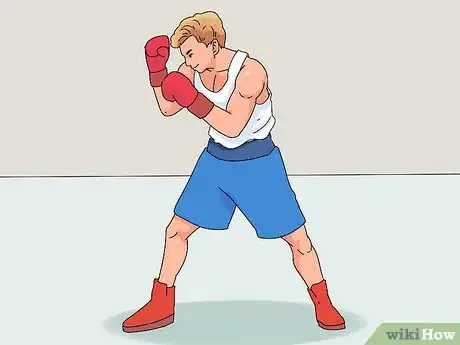
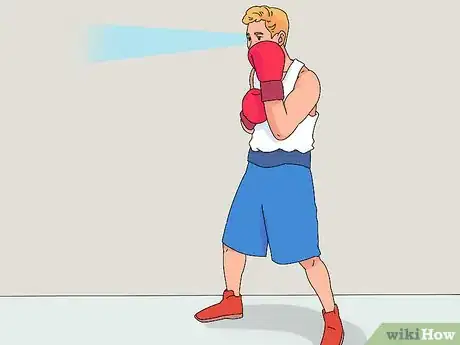
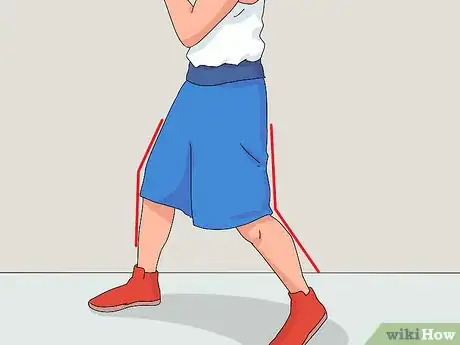
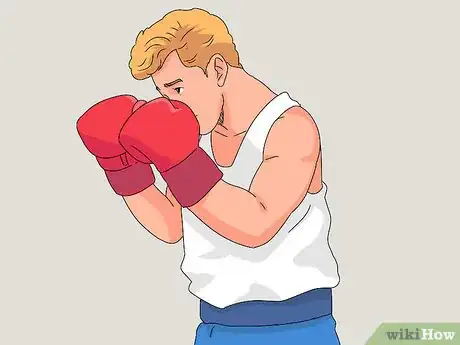
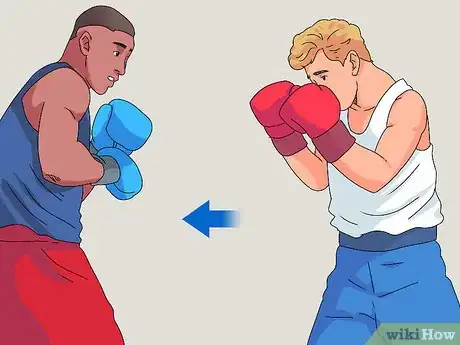
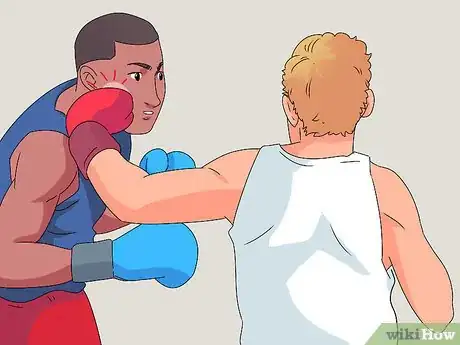
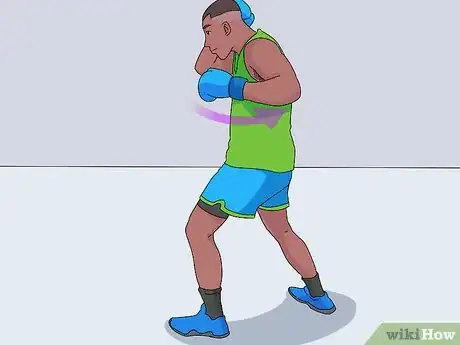
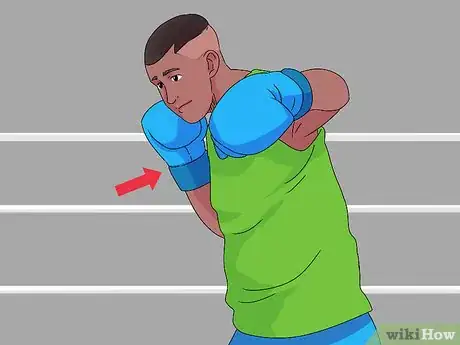
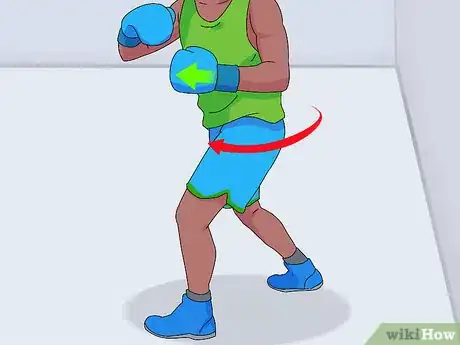
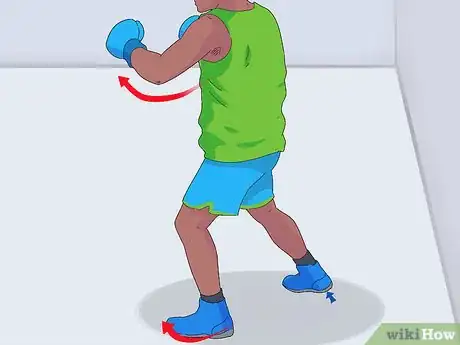
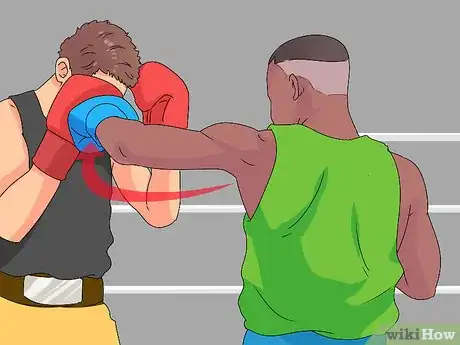
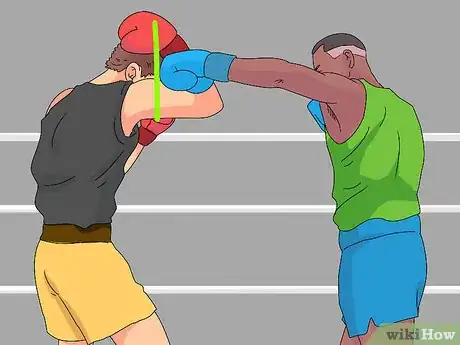
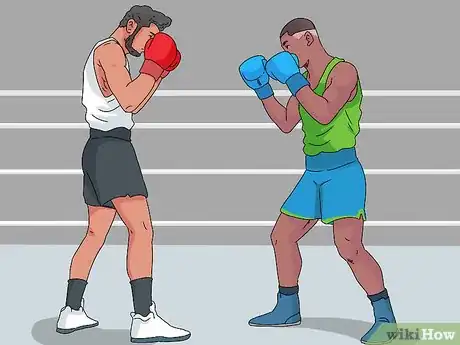
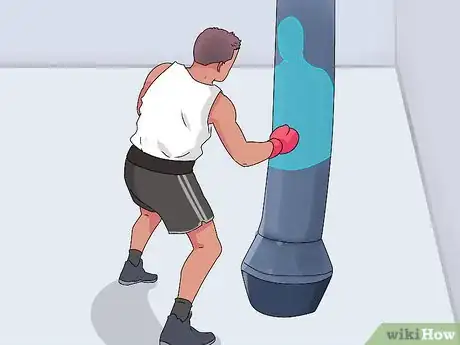
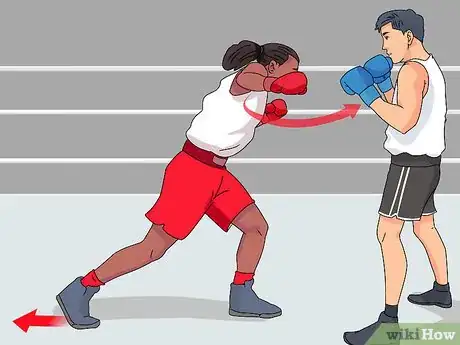



-Step-15-Version-2.webp)
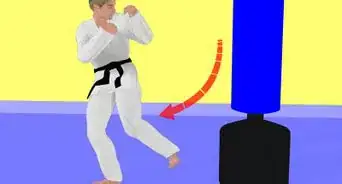




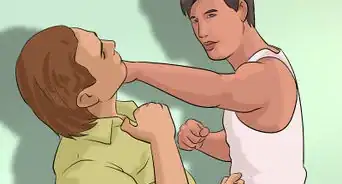
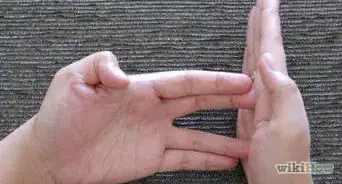







-Step-15-Version-2.webp)

